Spotify is currently one of the favorite audio music players out there. Any music fanatic may get addicted to the platform’s versatile accessibility to almost every song in almost all languages and genres.
It’s natural to fall in love with a platform this inclusive to the point of healthy obsession. If you’re someone who loves Spotify, uses it every day, and would love to have the application kickstart automatically at every login, then this guide is for you!
However, this guide is also for those who’ve had enough of Spotify’s auto-launching situation and just want to end this automated setup. The second half of this guide explains how you can disable Spotify from running automatically at Startup. So, let’s dive in!
Enabling Spotify to Run Automatically at Startup
There are 4 ways to enable Spotify to launch on its own each time you log into your computer – via the app’s settings, Windows settings on your computer, Task Manager, and the Startup folder. We’ll cover all methods in order.
Method 1: Enable Spotify to start automatically at login from the app
First, open Spotify on your desktop and click your profile username button in the top right corner of the screen. Select ‘Settings’ from the following drop-down menu.
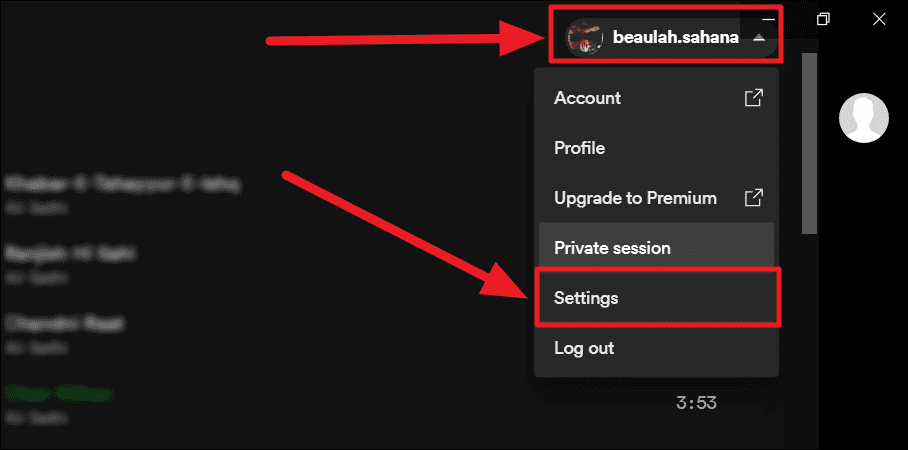
Scroll to the end on the ‘Settings’ screen. Then, locate and click the ‘Show Advanced Settings’ button.
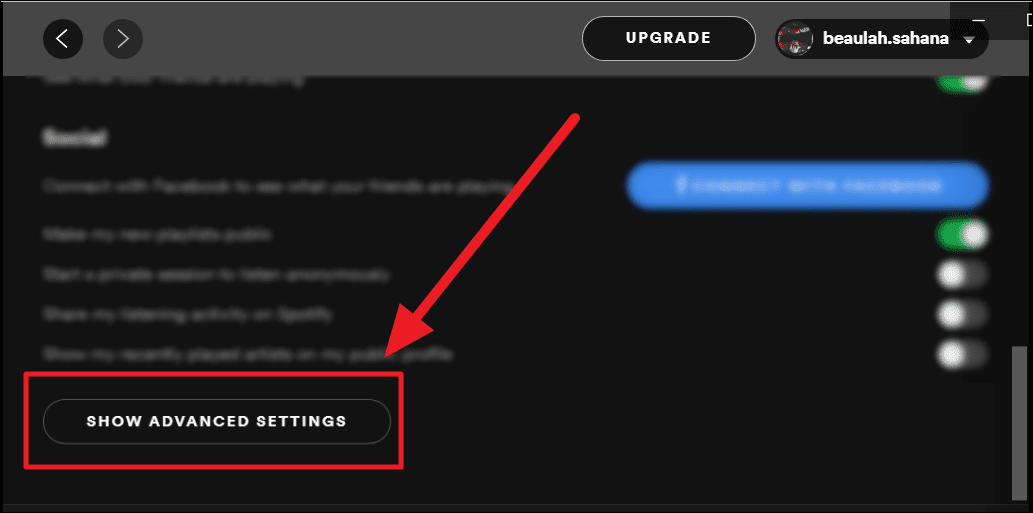
Under the ‘Advanced Settings’, look for the title ‘Startup and window behavior’ – typically found after ‘Playback’. Now, click the drop-down box next to the first option below this section – ‘Open Spotify automatically after you log into the computer’. Select ‘Yes’ from the drop-down. You may also choose ‘Minimized’ as this would still open Spotify at startup but have it minimized.

Method 2: Enable Spotify from Startup Apps in Windows Settings
Another way to get Spotify to launch on its own at Startup is via the Windows settings. Launch the ‘Settings’ app on your computer by holding the Windows + I keys together.
You can also click the ‘Start’ button (Windows icon) on the taskbar and select ‘Settings’ in the ‘Pinned’ items.
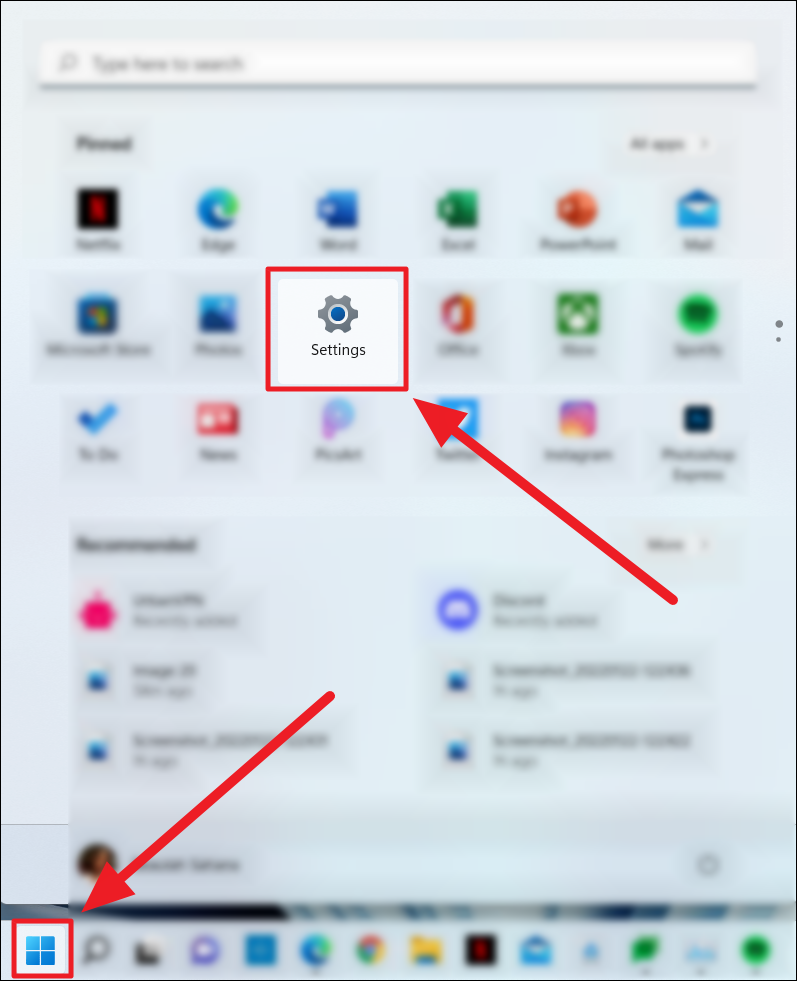
Alternatively, click the ‘Search’ button (magnifying glass icon) on the taskbar to begin searching for the app.

Type ‘Settings’ in the search field at the top of the ‘Search’ box. Select the appropriate search result on the left or click the ‘Open’ button in the app’s options on the right.

You can also right-click or double-finger tap on the ‘Start’ button and select ‘Settings’ from the pop-up menu.
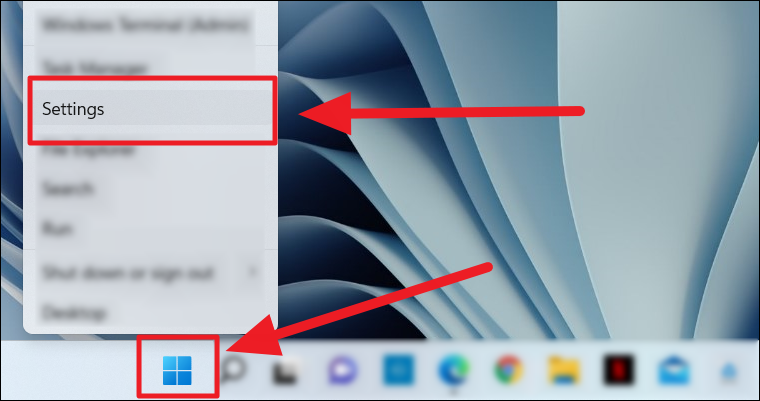
Once ‘Settings’ is open, click the ‘Apps’ option from the left sidebar.
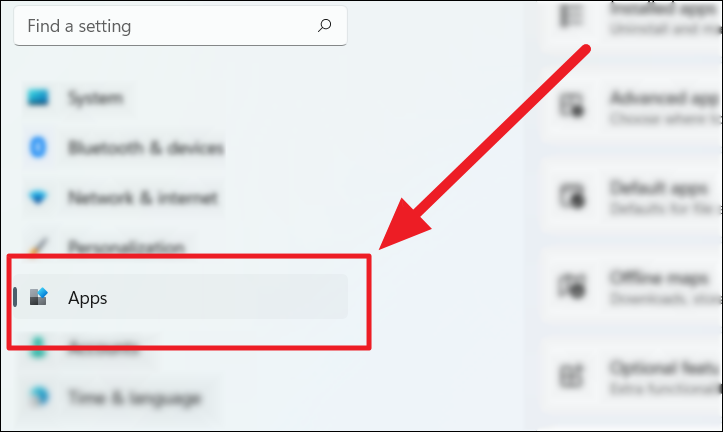
Locate and click the ‘Startup’ tile on the right.
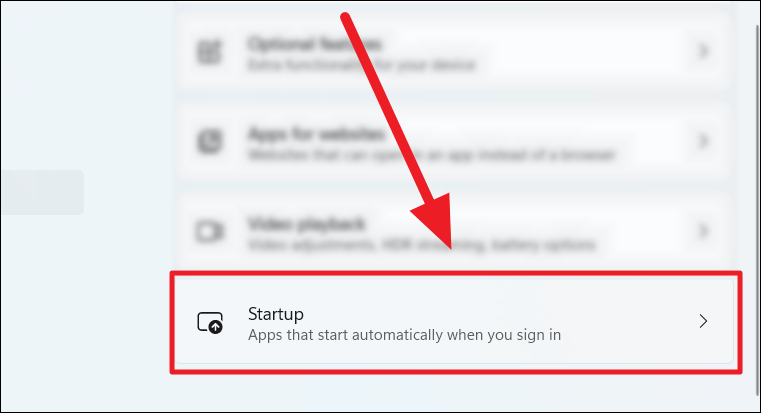
Now, scroll through the list to find ‘Spotify’. Click the toggle next to it to switch it ON and fill the button — thus enabling Spotify to launch at Startup.
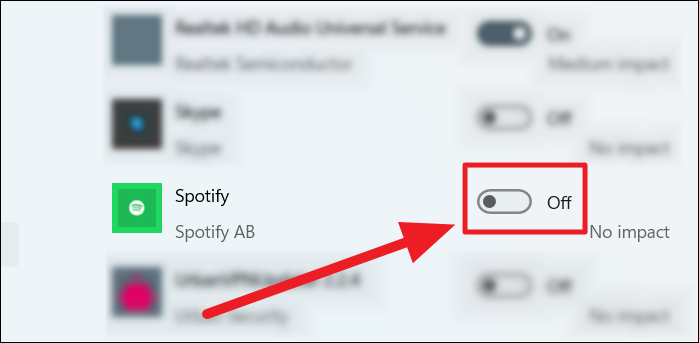
Method 3: Enable Spotify from Startup in Task Manager
Launch Task Manager by pressing Ctrl + Shift + Esc keys on your keyboard. Or right-click/double-finger tap on the ‘Start’ button and select ‘Task Manager’ from the menu.

Or, search for ‘Task Manager’ by clicking the ‘Search’ button from the taskbar and typing ‘Task Manager’ in the search field. Select the app from the search results or hit the ‘Open’ button in the app options on the right.

Click the ‘Startup’ tab on Task Manager.
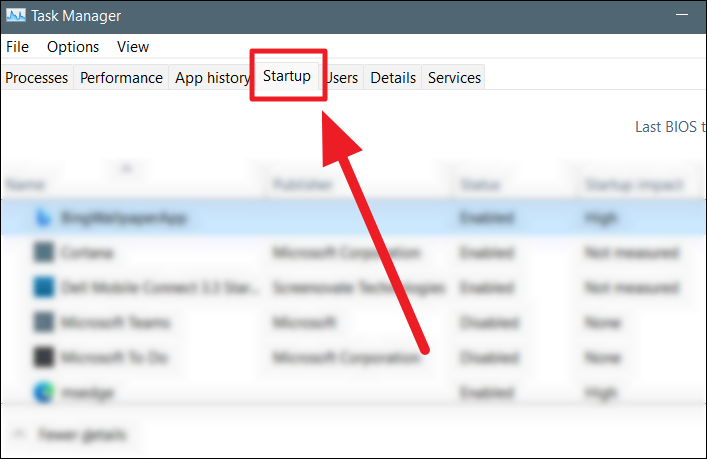
Scroll through the list of startup apps to find and select ‘Spotify’. You will see that it is disabled. To enable it, click the ‘Enable’ button in the bottom right corner of the screen.
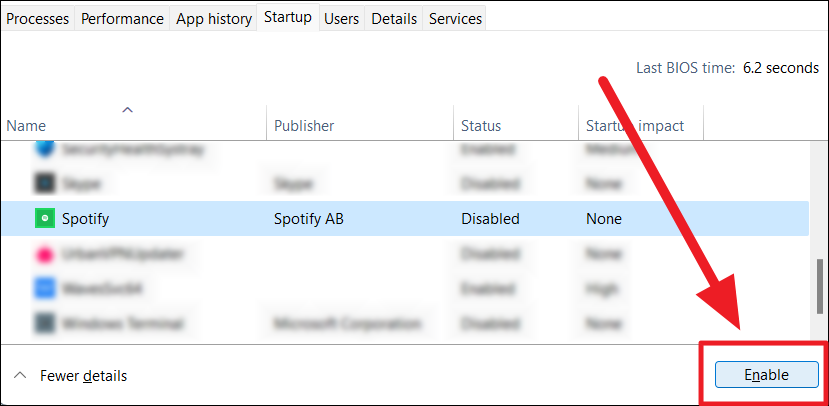
You can also double-finger tap or right-click on ‘Spotify’ and select ‘Enable’ from the menu.
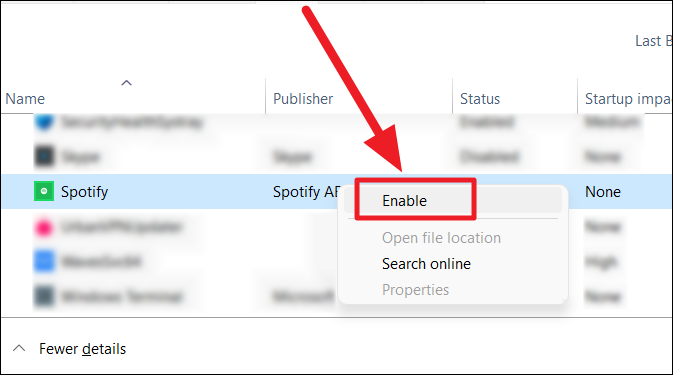
Method 4: Add Spotify’s Shortcut in the Startup Folder
If you don’t seem to find Spotify in either the task manager or in ‘Startup’ apps on Windows Settings, you can enable Spotify to launch automatically via the Startup folder. For this, add (paste) a Spotify shortcut in the ‘Startup’ folder.
To get started, you must first copy Spotify’s shortcut. Typically, an app’s shortcut is copied from its file location. But Spotify’s file location is a tedious path and the final location contains Spotify items that would get moved in the process of copy-pasting the shortcut. A simpler alternative is to add a shortcut onto the desktop and copy-paste it from there.
The easiest way to add a Spotify shortcut on the desktop is via ‘All Apps’. First, click the ‘Start’ button (Windows icon) on the taskbar.

Then, click the ‘All Apps’ button in the top right corner of the ‘Start’ menu.
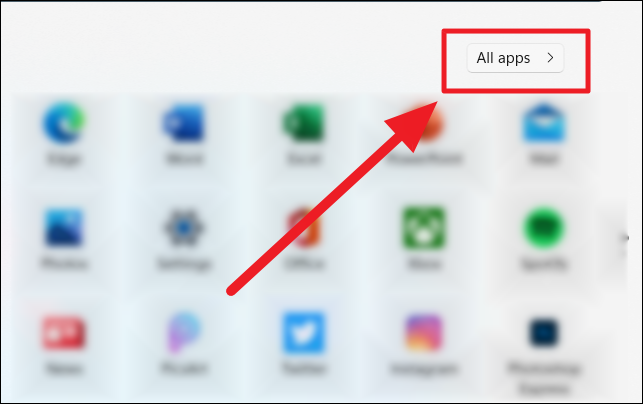
Scroll through all applications to find ‘Spotify’. Once located, tap the app, drag it from the list and drop it onto an empty space on your desktop. The shortcut is created!

When the shortcut is made, double-finger tap or right-click on it and click the ‘Copy’ button to copy the shortcut. You can also select the shortcut and press Ctrl + C on the keyboard.
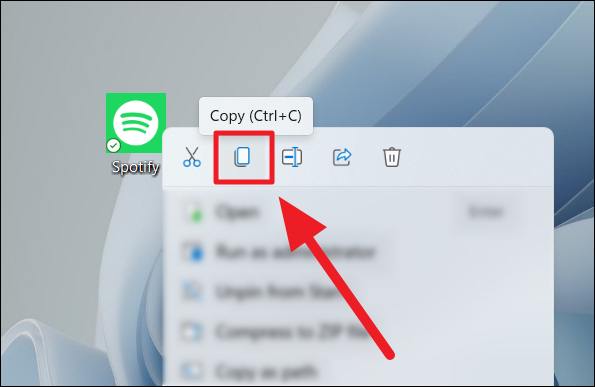
Now that the shortcut is copied, it’s time to paste it into the ‘Startup’ folder. First, open the ‘Run’ app by holding Windows + R on your keyboard. Then, type shell:startup in the ‘Open’ text field and hit Enter or click OK.
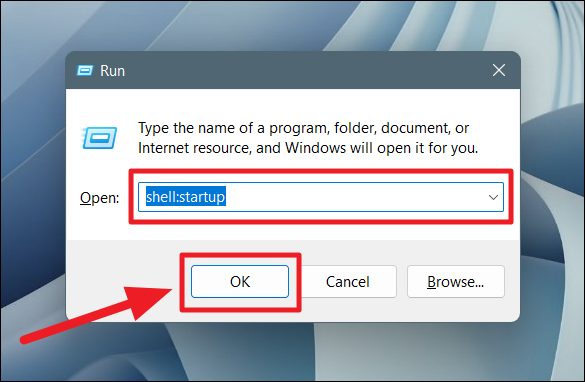
In the ‘Startup’ folder that opens next, click on an empty space and hit Ctrl + V on your keyboard to paste the copied Spotify shortcut.
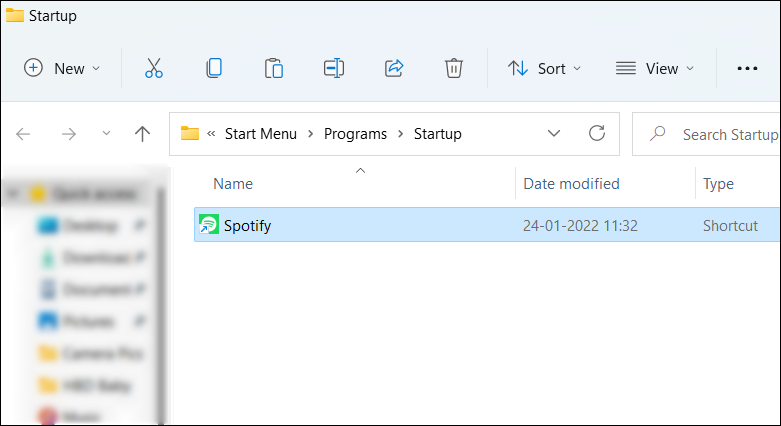
Once the shortcut makes it to the ‘Startup’ folder, it is set to launch automatically at Startup.
Disabling Spotify From Automatically Launching at Login
Disabling Spotify from automatically running at Startup has the same methods as enabling it to do so. All you need to do is use the same paths but do the opposite. You can disable Spotify from launching automatically at login via in-app settings, Windows settings, Task Manager, and the Startup folder.
Method 1: Set ‘Open Spotify automatically after you log into the computer’ to ‘No’
To disable Spotify from automatically launching each time you log into your computer, open the ‘Advanced Settings’ on Spotify as discussed above. Go to the ‘Startup and window behavior’ section and click the drop-down next to the ‘Open Spotify automatically after you log into the computer’ setting. This time, choose ‘No’ from the menu.
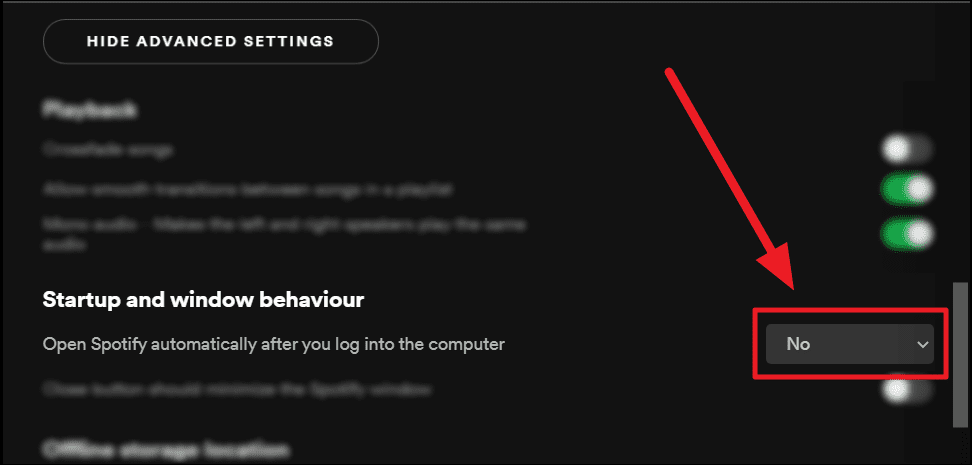
Method 2: Disable Spotify in Windows Startup Apps
Head back to ‘Startup’ in Windows settings by following the same path as explained previously (Settings > Apps > Startup). Click the toggle button next to ‘Spotify’ to turn it OFF. The toggle ought to be outlined and not filled.

Method 3: Disable Spotify From the Startup Apps in Task Manager
For this, first, launch Task Manager by using the Ctrl + Shift + Esc keyboard shortcut or any of the other methods discussed earlier in this guide. Then, click the ‘Startup’ tab on Task Manager and locate Spotify. Select the app and hit the ‘Disable’ button in the right-most corner at the bottom of the app window.
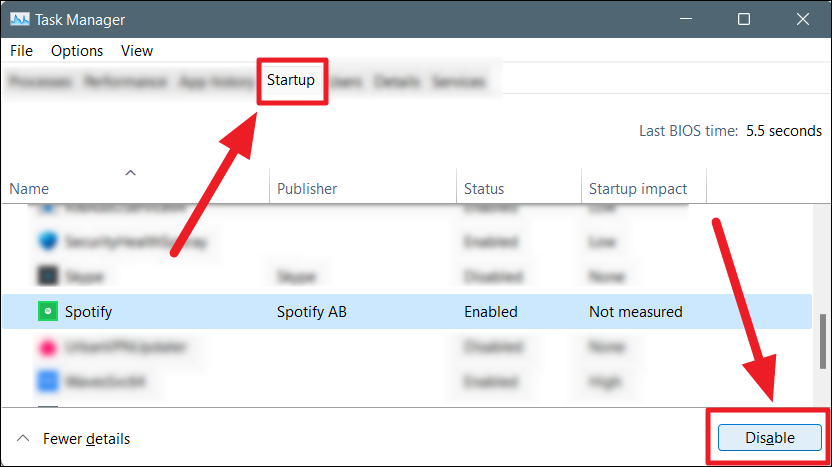
You can also double-finger tap/right-click on the app and select ‘Disable’ from the menu.

Method 4: Delete Spotify’s Shortcut in the Startup Folder
Another easy way to prevent Spotify from launching on its own at Startup is to simply delete its shortcut file in the ‘Startup’ folder that was initially added to enable the setting.
Note: If you enabled Spotify to run at Startup via the Startup Folder, then you may not be able to disable it in the task manager, Windows settings, or the app settings. In this case, you must delete the app’s shortcut in the Startup Folder to successfully disable Spotify from automatically running at login.
Follow the same procedure to open the startup folder (Run > Shell:Startup). Now, select the ‘Spotify’ shortcut file and click the ‘Delete’ button (trashcan icon) on the folder’s ribbon. Or, double-finger tap/right-click on the file and hit the same icon from the context menu.

You can also press the ‘Delete’ button on your keyboard after selecting the shortcut file to instantly delete it, thereby disabling the app from starting automatically at login.
And that’s how you can enable or disable Spotify from automatically launching after you log into your computer. We hope you found our guide helpful!

